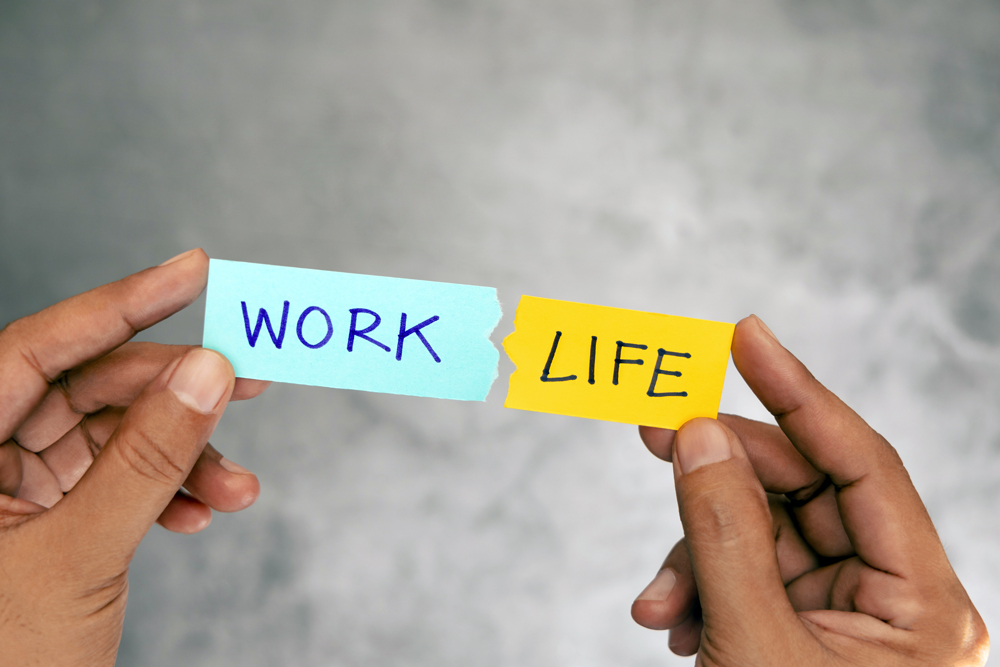In recent years, the modern workforce has seen a dramatic shift in values and expectations. Once characterized by long hours and near-total dedication to the job, work culture has swung toward an emphasis on flexibility, mental health, and personal fulfillment. This transformation has, in many ways, been positive and long overdue.
However, as with all trends taken to an extreme, could the push for work-life balance now be tilting too far in the opposite direction, bringing with it a new set of unintended but serious consequences?
A New Era of Productivity Concerns
The U.S. Bureau of Labor Statistics (BLS) recently reported a troubling trend: worker productivity has fallen markedly, particularly between mid-2021 and mid-2023. In fact, this period witnessed a 2% decline in productivity, the largest drop in any comparable timeframe in the last 70 years. While many factors contribute to productivity fluctuations—including economic instability, technological disruption, and workforce reshuffling—it is difficult to ignore the potential correlation between this decline and the workforce’s intensifying focus on work-life balance.
Productivity is not merely a metric of economic efficiency; it is a direct reflection of how much value is being created per hour worked. A sustained decrease suggests that fewer outputs are being produced relative to the time and resources invested. If this trend continues, it could threaten the foundational assumptions about employment, compensation, and business growth.
The Danger of Extremes
Extremes are rarely beneficial. Just as an overemphasis on career advancement at the expense of health and family can be destructive, so too can an overcorrection in the form of excessive focus on personal time, flexibility, and minimal work engagement. The ideal lies in balance—not an abdication of one domain in favor of the other.
Work-life balance is crucial. It protects against burnout, leads to better mental and physical health, and encourages long-term career satisfaction. However, the recent cultural swing suggests we may be approaching a new extreme—one in which the very concept of professional ambition and dedication is being questioned or even vilified. In some corners of professional life, the mere suggestion of going above and beyond, or prioritizing career goals, is frowned upon.
The Costs of Excessive Balance
What happens when work-life balance is no longer a tool for sustainability but becomes a defining constraint on performance and value creation?
The answer, unfortunately, is multifaceted and sobering.
For Individuals: Career Stagnation or Missed Opportunities
1. Slower Career Advancement
People who consistently prioritize work-life balance to the extent that they avoid extra projects, stretch assignments, or time-intensive roles may be passed over for promotions. While boundaries are essential, growth often comes from pushing those boundaries temporarily.
2. Reduced Competitive Edge
In fields where colleagues or competitors are putting in more time or effort, someone with a rigid work-life approach may fall behind in skills, exposure, or influence. This is especially true in highly dynamic sectors like tech, finance, or entrepreneurship.
3. Underdeveloped Resilience
Constantly optimizing for comfort can reduce one’s ability to deal with pressure or unexpected demands—traits often necessary for leadership and crisis management.
For Organizations: Decreased Agility and Innovation
1. Risk of Cultural Complacency
If a company leans too far into work-life balance without aligning it to performance and outcomes, it may inadvertently create a culture where mediocrity goes unchallenged and high performers feel unsupported or unmotivated.
2. Talent Imbalance
Excessive flexibility might attract people more focused on lifestyle than on mission or contribution, which can dilute a performance-oriented culture or make it difficult to build high-output teams.
3. Coordination Challenges
With everyone working limited or flexible hours, collaboration can suffer. Missed meetings, delayed feedback loops, and slower execution may frustrate clients and colleagues alike.
For the Job Market and Economy: Reduced Dynamism
1. Slower Innovation and Productivity
On a macro level, a workforce overly focused on lifestyle may be less willing to take risks, invest discretionary effort, or drive disruptive change—all of which fuel economic growth and job creation.
2. Mismatched Expectations
Newer workers raised on the ideal of perfect balance may expect accommodations that are not realistic in demanding roles or industries, leading to high turnover and unmet expectations.
3. Decline in Essential but Demanding Professions
Fields like healthcare (including pet healthcare), emergency services, and entrepreneurship often require irregular hours and sacrifice. An overemphasis on balance can exacerbate shortages in these areas if people avoid them altogether.
Sustainability Requires Mutual Commitment
It is critical to understand that neither extreme—overworking nor underperforming—is sustainable. The pre-pandemic model of chronic overwork and constant availability led to widespread burnout, health crises, and mass resignations. But the pendulum’s swing in the other direction, if unchecked, carries its own risks.
We are already seeing early signs of this unsustainable trajectory. Some industries report difficulty finding motivated, high-performing employees. In others, quiet quitting, where workers do the bare minimum, has become not just tolerated but normalized. While boundaries are important, so too is contribution. Sustainability must be mutual: employees need reasonable conditions and employers need meaningful output.
The truth is that work-life balance, when excessively prioritized over value creation, becomes a kind of self-sabotage. It undermines the very systems and opportunities that allow for flexible and rewarding careers. The freedom to set boundaries, take time off, or work remotely is predicated on trust that workers will still deliver value. Erode that trust, and the privileges may erode, too.
The Unspoken Taboo
Perhaps one of the most troubling aspects of this cultural moment is that it has become taboo to even suggest that work-life balance has gone too far. To raise concerns about declining productivity or diminishing engagement is to risk being labeled out of touch, overly demanding, or anti-wellness.
This silence is dangerous. Productive dialogue requires the ability to examine trends from all angles and to acknowledge the benefits while also confronting the costs. If organizations, leaders, and professionals are unable to have honest conversations about performance expectations and work ethic, we risk building a fragile workplace culture, one that collapses under the weight of its own contradictions.
The reluctance to question the current orthodoxy on work-life balance stifles innovation and problem-solving. It makes it more difficult to address real challenges, like declining productivity, disengagement, and misalignment between compensation and output. And it sets up false dichotomies, as though one must choose between wellness and achievement, when in fact both can (and should) coexist.
A Call for Recalibration
The solution is not to reject work-life balance, but to recalibrate it. This requires a nuanced, context-specific approach that recognizes the diversity of roles, industries, and personal circumstances. It means moving beyond slogans and toward strategies that align employee well-being with organizational performance.
Leaders should feel empowered to set clear expectations without being vilified. Employees should feel comfortable advocating for their needs without being penalized. And both should recognize that mutual value, not just personal comfort, or corporate profits—is the cornerstone of a healthy work relationship.
To achieve this, companies might invest more in training and development, so workers can grow into roles that challenge and engage them. They might implement flexible performance metrics that go beyond hours worked and focus instead on outcomes delivered. And individuals might reflect on how their current work habits align with their long-term career goals and values.
The Road Ahead
How the current emphasis on work-life balance will evolve remains to be seen. But one thing is certain: if the pendulum continues to swing unchecked, the results will not be benign. Declining productivity, disengaged employees, and frustrated employers will eventually force a reckoning.
That reckoning need not be destructive. If approached thoughtfully, it can become a moment of course correction. We can take what we have learned about the importance of well-being and combine it with renewed attention to contribution, ambition, and excellence. We can reject both burnout and apathy and instead strive for a dynamic equilibrium where people thrive and businesses flourish.
In the end, true balance is not about doing less or more. It is about doing what matters—to ourselves, to our employers, and to the world we help create through our work. If we can rediscover that truth, we may just find that the best days of work-life balance are not behind us or ahead of us, but right here, in the ongoing effort to get it right.

